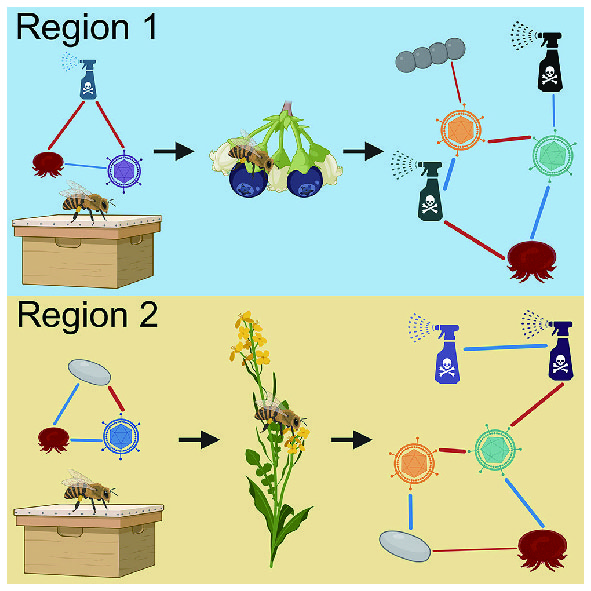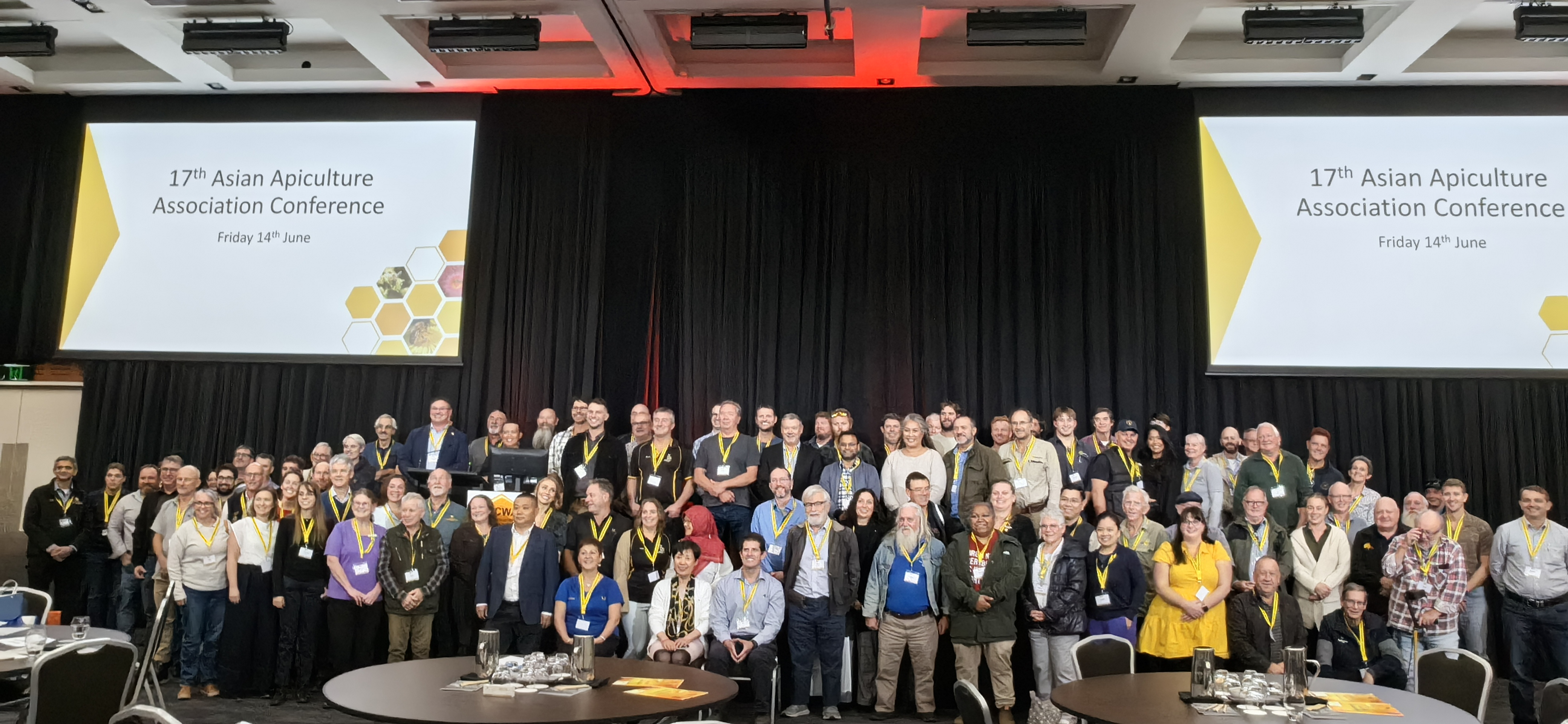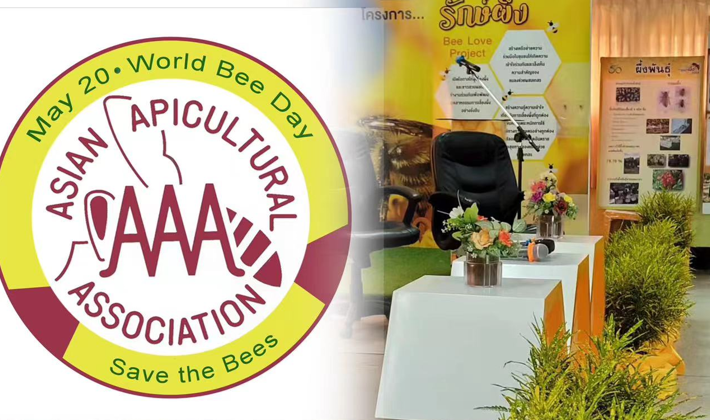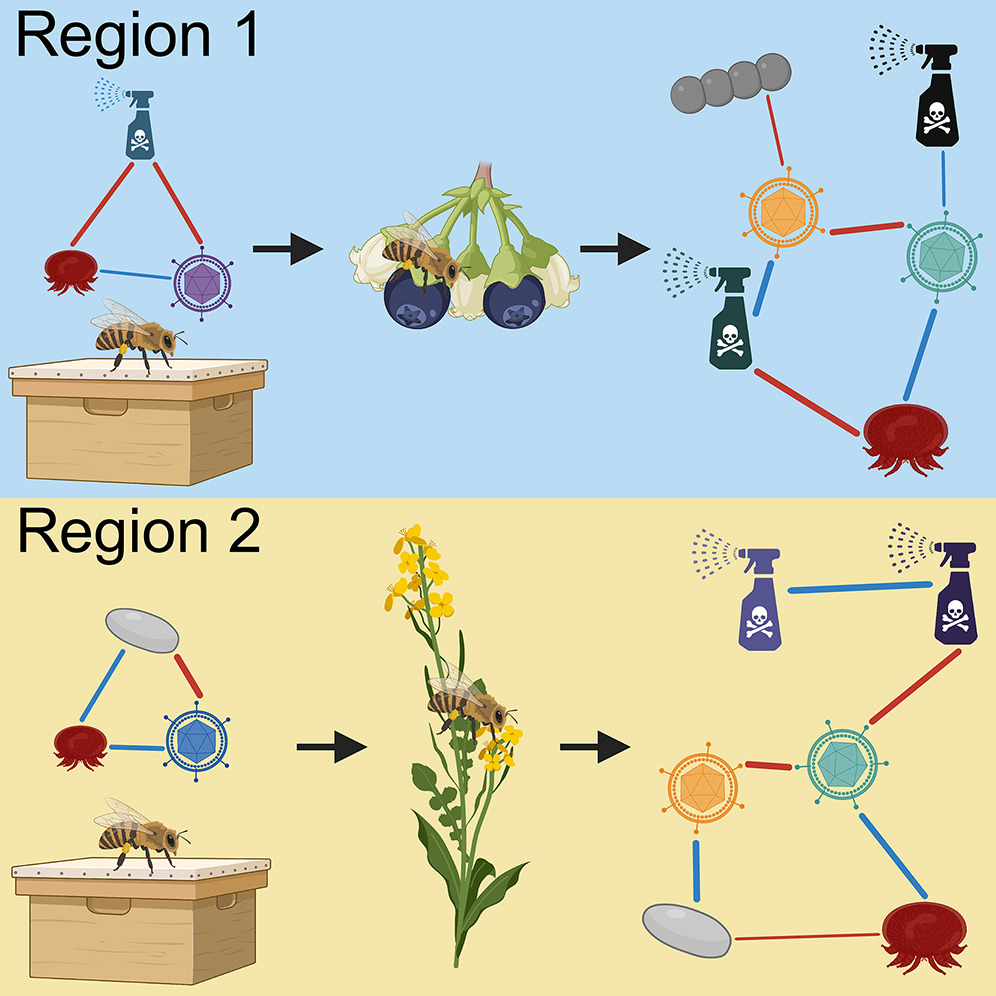Honeybees
play an indispensable role in human society. Not only do they provide us with
honey and other bee products, but they also serve a crucial ecological function
through pollination. However, despite their significant economic contribution,
the number of managed bee colonies has seen a concerning decline in recent
years, posing a serious threat to crop production. According to recent national
surveys on colony losses in Canada and the United States, combined with reports
from beekeepers, the winter loss rate of bee colonies ranges between 30% and
60%, a figure far beyond what beekeepers can sustain.
The
primary stressors driving this large-scale decline in bee populations include
environmental changes, habitat fragmentation, parasites, pathogens, and
pesticide contamination. These factors often compound at both individual and
colony levels, further worsening the survival conditions of bees. While the
academic community has made efforts to study the effects of these stressors on
bee health, progress in preventing or mitigating colony losses remains limited.
One possible reason is that most colonies typically face simultaneous assaults
from multiple stressors, which act synergistically rather than independently.
Therefore, there is an urgent need to develop new approaches to understand how
these stressors interact within bee colonies and address the challenges to bee
health more effectively.

In
a recent study published in Current Biology, Sarah K. French and her
team from York University, Canada, used systems theory and network analysis to
simulate how multiple stressors affect honey bee colonies pollinating crops
across Canada. The researchers employed a network framework to identify and
quantify the relationships between hundreds of potential co-occurring
stressors. Throughout the experiment, bee colonies were sampled from crop
fields at different times: before, during, and after crop flowering. At each
time point, the researchers assessed levels of parasites, pathogens, and
pesticides. They collected nurse bees, bee bread, pollen, and nectar to detect
and quantify the presence of 239 agricultural chemical residues. Additionally,
they measured levels of Varroa mites, Paenibacillus larvae, and nine
honey bee-related viruses.
The
study identified 53 different stressors in the bee colonies. Notably, pesticide
residues were detected in over 97% of nectar and pollen samples from beekeeping
sites. Varroa mites and P. larvae were found in 73% of samples, while
five significant viruses were present in more than 55%. These viruses included
black queen cell virus (BQCV), deformed wing virus type A (DWV-A), Lake Sinai
virus (LSV), sacbrood virus (SBV), and deformed wing virus type B (DWV-B). In
contrast, only 30% of sites tested positive for the remaining three honey
bee-related viruses: acute bee paralysis virus (ABPV), chronic bee paralysis
virus (CBPV), and Kashmir bee virus (KBV). Each beekeeping site faced 15
stressors, including an average of 7 pesticides, 5 viruses, and 0.3% Varroa
mite infestation.
The
researchers further used association network analysis to evaluate the relative
importance of each stressor within the networks. They found that certain
stressors consistently appeared across all time points for specific crops, and
the number of stressor elements in the network was independent of the number of
days since the stress experiment began. In their analysis, the researchers
discussed the relative expected impact (EI) of each stressor, revealing that
Varroa mites, with a lower EI compared to other stressors, are easier to
manage, whereas pesticides and viruses are more challenging to address due to
their strong interactions with other stressors. The number of stressors and
their interactions varied significantly between different crops and regions.
The study also revealed that honey bee colonies experienced multiple stressors
at every observation point, and exposure to crops and the pollination period
generally increased the number of stressors. These interactions among stressors
could seriously harm bee colonies, such as the interaction between Varroa mites
and clothianidin, which can reduce bee weight, or certain fungicides, making
pesticides more toxic to bees or causing sublethal effects.
The
researchers suggest that future studies focus on identifying the most
influential stressors within the networks, particularly those with lethal and
non-lethal effects on bee health.
Moreover,
some stressors have not yet been fully recognized by beekeepers. During the
pollination season, beekeepers typically manage various stressors, such as
parasites and pathogens, which often have lesser effects on the network, while
they may overlook the differential impact of pesticides and viruses on other
stressors. Therefore, involving multiple stakeholders, including beekeepers,
growers, and government regulatory bodies, is essential to explore viable risk
management strategies or measures. These efforts should adjust traditional risk
assessment methods to consider interactions between harmful stressors.
Additionally, the stressor environment changes before, during, and after the
pollination season, and the stressors encountered during pollination may
persist over time, contributing to the weakening of colonies as they enter the
overwintering period.
In
summary, the significant variations in stressor networks within bee colonies
highlight the need for tailored solutions to manage the risks faced by honey
bees and their colonies across different crops and regions. Careful management
of multiple stressors is required, and further exploration of the complex
stress environments bees face is necessary to establish a more comprehensive
framework for managing bee and colony health.
Professor
Juliana Rangel of Texas A&M University commented on this study, emphasizing
that it sheds light on the complexity of biological and environmental stressors
affecting honey bees. She noted that stressor networks become increasingly
complex when bee colonies interact with certain vital crops, and some stressors
have a much more significant impact within these networks than others.
Additionally, the interactions between stressors change over time. This study
offers a new perspective on understanding the survival crisis of honey bees and
underscores the value of systems theory and network analysis in future research
to deeply understand how specific stressors affect bees. It also provides essential
scientific evidence for protecting honey bee health.

https://doi.org/10.1016/j.cub.2024.03.039
|








